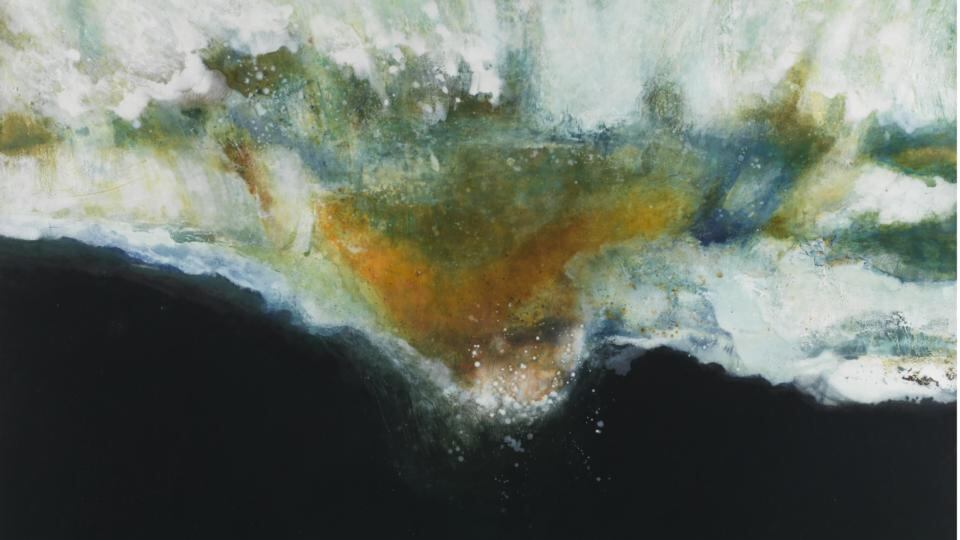Last year the painter Mick O’Dea approached me to ask if I would contribute a short text to a publication on three of his exhibitions at the Kevin Kavanagh Gallery dealing, respectively, with the war of independence, the treaty negotiations and the outbreak of the civil war.
Not being a historian but being, nonetheless, familiar with the work, I was more than happy to write a piece looking at the project in the context of contemporary painting that deals with second-hand sources, from Gerhard Richter to Luc Tuymans. Last week, a few days before the opening of Diana Copperwhite’s exhibition there, Kavanagh hosted a small reception to formally launch O’Dea’s and another recent gallery publication, on painter Robert Armstrong.
The works assembled in O'Dea's Black & Tan, Trouble, The Split amount to a big, impressively coherent project. They draw on contemporary documentary sources and stem from the artist's long-term fascination with the subject. O'Dea does not pretend to omniscience, and, while the images he has made are extensively researched and richly detailed, they retain a sketchy, informal character. That works in their favour.
0 of 3
In book form, they have an immediacy that brings the era to life. Rather than consigning history to the security of a fixed, settled view, O’Dea vividly conveys a sense of fallible human enterprise, a messy, unpredictable, often desperately unhappy progression arising from the clash of competing principles, imperatives and – especially well-defined – personalities. It is a thoughtful, provocative body of work.
Incidentally, and perhaps not surprisingly, he has, in preparation for a major exhibition planned at the RHA next year, embarked on what might be termed the prequel: the 1916 Rising.
The second publication is a monograph on Robert Armstrong, featuring recent work, with an eloquent essay by Colm Tóibín. It was timed to coincide with a recent solo show at Volta New York. In it, a number of Armstrong’s visually sumptuous paintings are beautifully reproduced (both publications were designed by Atelier David Smith). The paintings address several centuries of art history. They offer revisions and variations in a way that bears comparison with the Keith Jarrett Trio’s approach to the standard, classical jazz repertoire, under the self-explanatory general heading “Standards”.
In fact, why stop there? One could similarly mention musicians Brad Mehldau and The Bad Plus. More, as with both these two examples, Armstrong doesn’t just revisit, he sets out to extend and revitalise the repertoire, delighting in the versatility and volatility of painting as an expressive language, rather than consigning it to historical fixity. The two artists are quite different, but therein lies their common ground.
[ kevinkavanagh.ieOpens in new window ]
In memory of Albert Irvin
London-born Albert Irvin, who died aged 92 on the morning of March 26th, was a brilliant abstract painter who devised his own grammar of informal geometry allied to rich colour. He and his widow, Betty Nicholson, had two daughters.
He studied at Goldsmiths College after the second World War – in which he served as an RAF navigator – and he then taught there for more than 20 years from 1962.
He later joked that, in the cradle of NBA conceptual art, he didn’t try too hard to dissuade students from pursuing the conceptual path, as they had become the competition if they stayed with painting. Informally, he remarked that a real painter would never be put off by fashionable diktats.
It is perhaps less well-known that Irvin had strong associations with Ireland, mainly through the Peppercanister Gallery, where he held several very popular solo shows. In fact, Irvin’s trump card was his popularity. Even an audience antipathetic to abstract painting tended to warm to his.
In person he was exceptionally perceptive, attentive and engaging. He was often described as youthful, which is true enough, but doesn’t quite do justice to his amazing spirit.
Bill Clinton once said that everyone has two ages: effectively their chronological age and their abiding emotional age, which is in a way their centre of gravity. Irvin’s emotional age was a youthful but assured 17: confident, endlessly open to possibility but crucially free of any spurious arrogance.
Tonn – Gwen O’Dowd
Hillsboro Fine Art, Dublin
****
The constants in Gwen O’Dowd’s work have been sea and shore and the inexorable shaping of one by the other. By no means always but on occasion she has seemed to encourage a metaphorical reading of her naturalistic imagery, evoking ideas of sensuality and sexuality. On those occasions Georgia O’Keeffe is a good point of reference. More often, perhaps, her pared-back compositions have verged on the point of abstraction, the categories of, say, sea and sky dissolving into a Rothko-like vision of the sublime.
Intriguingly, when she began to spend sustained periods of time by the sea in Wexford, she produced a series of straightforwardly representational, watercolour studies, not of the sea or the shore, but of birds – because they were everywhere around her.
Now, in Tonn she is back to the shore, and to the rhythm and explosive energy of sea waves. The work encompasses both the Rothko-esque sublime, with several exceptionally minimal compositions, and O'Keeffe's evocation of nature and sexuality. The paintings' finely burnished surfaces are built up in thin glazes, with the extreme tonal range expected of O'Dowd: from deep, dark blue-blacks to iridescent, blazing whites. Like the sea and the shore, they are timeless, and endlessly engaging. Until April 24th, hillsborofineart.com












